The BYTE, an open-source mouth-actuated input device for people with physical challenges has just been named the Grand Prize winner of the 2020 Hackaday Prize. The award for claiming the top place and title of “Best All Around” in this global engineering initiative is $50,000. Five other top winners and four honorable mentions were also named during this evening’s Hackaday Prize Ceremony, held during the Hackaday Remoticon virtual conference.
This year’s Hackaday Prize focused on challenges put forth by four non-profit partners who have first hand knowledge of the problems that need solving as they work to accomplish their missions. These organizations are Conservation X Labs, United Cerebral Palsy Los Angeles, CalEarth, and Field Ready. Join us below for more on the grand prize winner and to see the Best in Category and Honorable Mention winners from each non-profit challenge, as well as the Best Wildcard project.
Over $200,000 in cash prizes have been distributed as part of this year’s initiative where hundreds of hardware hackers, makers, and artists competed to build a better future.
Best All Around: The BYTE
The BYTE is the Grand Prize winner of the 2020 Hackaday Prize. This responsive hands-free interface is affordable, versatile, and will be life changing for people who have limited or no mobility for using traditional input devices. The BYTE has a tongue sensor for directional movement and a pressure sensitive bite sensor for selection input.
 At first glance this is a computer mouse you can put in your mouth. Since the jaw and tongue are core motor functions in humans, many people who have limited or no control over other parts of their body still retain great mobility in their mouth. Being otherwise unable to affect the world around them, mouth-based interfaces have been transformative.
At first glance this is a computer mouse you can put in your mouth. Since the jaw and tongue are core motor functions in humans, many people who have limited or no control over other parts of their body still retain great mobility in their mouth. Being otherwise unable to affect the world around them, mouth-based interfaces have been transformative.
The BYTE goes far beyond the utility of traditional sip-and-puff interfaces by internalizing the joystick functionality using tongue pressure, converting the air pressure-based input to bite control, adding a vibration motor for haptic feedback, and implementing advanced control options in how the sensors can be used. Light bite pressure and directional input (we’ll call that d-pad for short) moves the mouse, firm bites are clicks, even pressure on the d-pad is mapped as custom input as is a long bite, and pressing up or down on the d-pad without a bite will scroll.
The BYTE’s input sensors have been designed to fit inside of an adult-sized pacifier nipple, readily available at low cost and safe to have inside your mouth. The wire that snakes out ends in an RJ45 phone jack to interface with a small board that converts the signals to a USB connection. While a number of 3D-printed parts have been used in the prototype, these would be easy to injection mold as part of a volume manufacturing run.
The United Cerebral Palsy Los Angeles design brief for the 2020 Hackaday Prize specifically called for new designs of trackballs or joysticks that could be made affordable and open source, and be a tool for greater independence in the lives of those with physical challenges. The well-engineered design of the BYTE fulfills those goals and is a deserving recipient of the grand prize. Congratulations!
Conservation X Labs Prizes:

Best in Category: Solar Scare Mosquito 2.0
This floating sensor is designed to detect and classify mosquitoes present in an area to help researchers know if the region is at risk of spreading disease based on the species and sex of the mosquitoes. It also seeks to help eliminate their ability to reproduce by using air bubble to cause surface ripples in the water, preventing larvae from breathing at the surface of stagnant water. Prize: $10,000
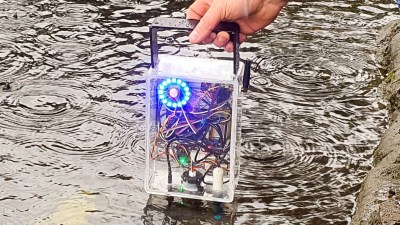
Honorable Mention: UnifiedWater
This portable sensor package can gather and report water-quality data. It includes a set-and-forget solution for data collection, using multiple water sensors to report back via a 3G connection and powered by a solar panel. The online dashboard developed as part of the project means the data is not only available, but actionable. Prize: $3,000
Field Ready Prizes:
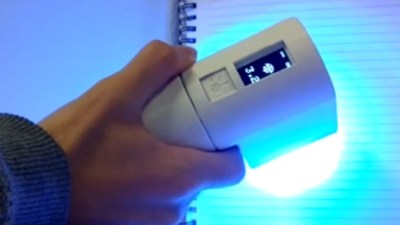
Best in Category: UVA
Rapid manufacturing and repair is an important part of disaster recovery. Ultraviolet-curable adhesives are often used in traditional manufacturing, this project provides a powerful and affordable UV curing wand for use in the field. Even at the small scale of prototyping it looks to lower the cost of traditional tools by up to five times. Prize: $10,000
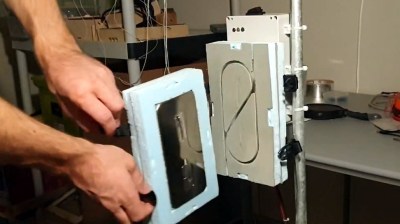
Honorable Mention: OpenFluidWarmer
IV fluids that are stored under refrigeration must be warmed before they can be used. This is no problem at established hospitals, but becomes a major issue in the field. This solution combines hot plates, a winding path for IV tubing, and an electronic controller to create a fluid warmer that could be built on scene. Prize: $3,000
United Cerebral Palsy Los Angeles Prizes:
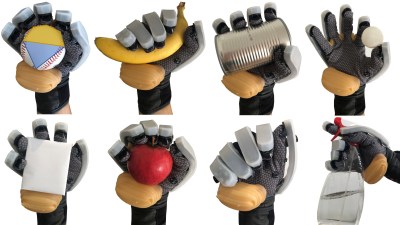
Best in Category: Exoskeleton Gloves
Adding strength and dexterity to a mechanism as versatile as the human hand is a game changer. This assistive device uses a clever pneumatic jamming mechanism for each finger, along with a thumb-like shelf on the heel of the hand for extra gripping surface, and a flex sensor system to add the ability to detect what the user is doing with their hands. Prize: $10,000

Honorable Mention: Adaptive Interface Harmonica
A musical harmonica uses different channels for air to play different notes. The Magpie MIDI project harnesses that versatility into a sip-and-puff system. The different channels are detected individually, and the mount for the harmonica is itself a joystick that can be used for navigation. Prize: $3,000
CalEarth Prizes:
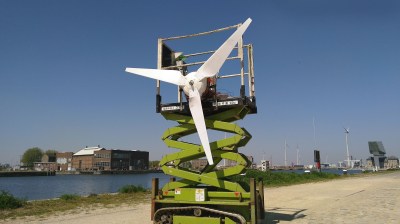
Best in Category: Propel-E 450
Renewable energy is a powerful tool in combating climate change. This wind turbine is capable of outputting 450 Watts of power and is mostly 3D-printed. From the blades, to the custom-wrapped wire coils, it’s a blueprint for building your own, whether it’s an exact copy or you plan to make your own changes to move the open source design forward. Prize: $10,000
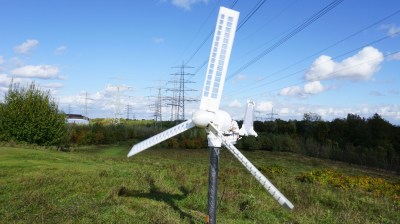
Honorable Mention: WinDIY
This wind turbine design (whose name is pronounced “windy”) solves a major issue by delivering variable pitch to the three blades. This is used to adjust how much wind is caught by the turbine, driving the generator at the most efficient speed, or letting the wind pass harmlessly by to avoid over-speed problems that would damage it during strong wind conditions. Prize: $3,000
Best Wildcard:
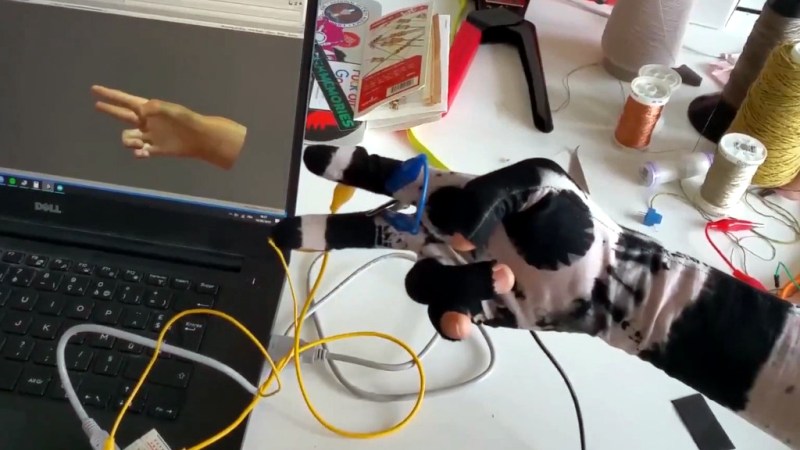
PolySense: Augmenting Materials with Electrical Properties
The Wildcard category is for projects that are worthwhile but that didn’t address one of the specific challenges outlined by our non-profit partners this year.
What if you could turn any textile or porous material into a sensor? That’s the question asked and answered by the PolySense project that uses piezoresistive dye to build sensors from textiles. This could be shirts and pants, scraps of fabric, paper, or many other materials. Using traditional dying techniques like tie-dying, different areas can perform specific sensing tasks. Prize: $5,000
Spectacular Accomplishments During a Very Difficult Year
Congratulations to all who entered the 2020 Hackaday Prize. It has been an incredibly difficult year as tragic loss of life and suffering caused by the coronavirus outbreak swept the globe. What it has proven is that we are stronger together, working to help one another whenever and wherever possible. This outbreak is among the many challenges facing humanity. Seeing so many entries of the Hackaday Prize striving to provide better independence for the physically challenged, more access to housing and infrastructure for those in crisis, and answers to pollution and climate change are beacons of hope.
Thank you to all who entered, to our expert judges and mentors, and to the staff at our non-profit partners. Dedicating your time and talent to these issues leads the way. It sets the example for others to follow, and builds on a movement throughout the world of people and initiatives working to solve hard problems, and that’s something that really matters.

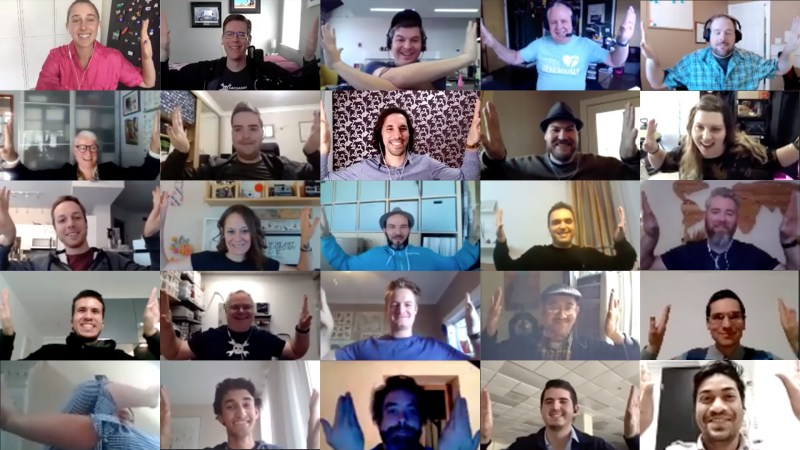




















Congrats to all the winners!
And what would be the the winner projects if they were to be choosen by HAD staff?
Nevertheless, congrats to the winners.
I recall seeing a student using an Integramouse (https://www.integramouse.com/en/home/) as part of a research effort some years back. Congratulations to the BYTE people, but it’s interesting that United Cerebral Palsy would be looking for new inventions, then pick one that’s similar to existing ones. In their research they were comparing the effectiveness of 5 or 6 mouthmice.
I would ask the same question that Danjovic asked – given that HAD people see all of the hacks out there, what would the staff (or the readers) have picked?
I mean, an open-source widely available project seems like a significant advancement from a closed source project only available from Austrian sources?…
While mouth controlled joysticks are in some ways similar to the BYTE, there are important differences. One differentiator is the type of muscles involved in using these devices.
The lip, jaw and neck muscles involved in operating these joysticks tire much more quickly than the tongue (Think of the last time you had to hold a smile just a little too long for a slow photographer…). The tongue is very similar to the type of muscle comprising the heart, rendering it nearly tireless.
Also I just checked the link you shared and that device is well over $2000! The BYTE is an order of magnitude more affordable.
Congrats to the winners and thats an impressive mouth-input device!
I’m very surprised that RX-Modulus didn’t get a prize.
For the BYTE, i would have spelled it differently, “Bight” (noun. A: a curve or recess in a coastline, river, or other geographical feature. B: a loop of rope, as distinct from the rope’s ends.)
One reason for the differently spelled name is searchability; in a future where this product is widespread, imagine trying to google “BYTE” and getting everything else about the smallest measurements of data and images of graphs showing a magazine or “hey that old save icon thing!”
Additional alternative name i’d like to throw in is “Mouthse”(mouth mouse) inspired by that video of animals with human mouths(by markiplier, meh https://www.youtube.com/watch?v=I4Q3YDezqcM ) which could lead to some interesting marketing images of a mouse(animal or peripheral, your choice) with a human mouth.
Question on the windmails – how will you deal with uv – I cannot see pla handling that well.
There are multiple more UV-stable materials available to print in via print-to-order, and then there’s the option of coating, which could include some basic fiber reinforcement if you want/need that.
And my congratulations to all these winners – and the other participants as well!
Good question. We are testing that as we speak. A coating adds room for inbalances so we are careful with that. (The same for the composites mentioned by AMaarten – we will be testing composite plastics in the very near future. ).
A wonderful selection of innovative ideas to help others I love the Mouth Mouse this will help many that have no control God bless the inventor